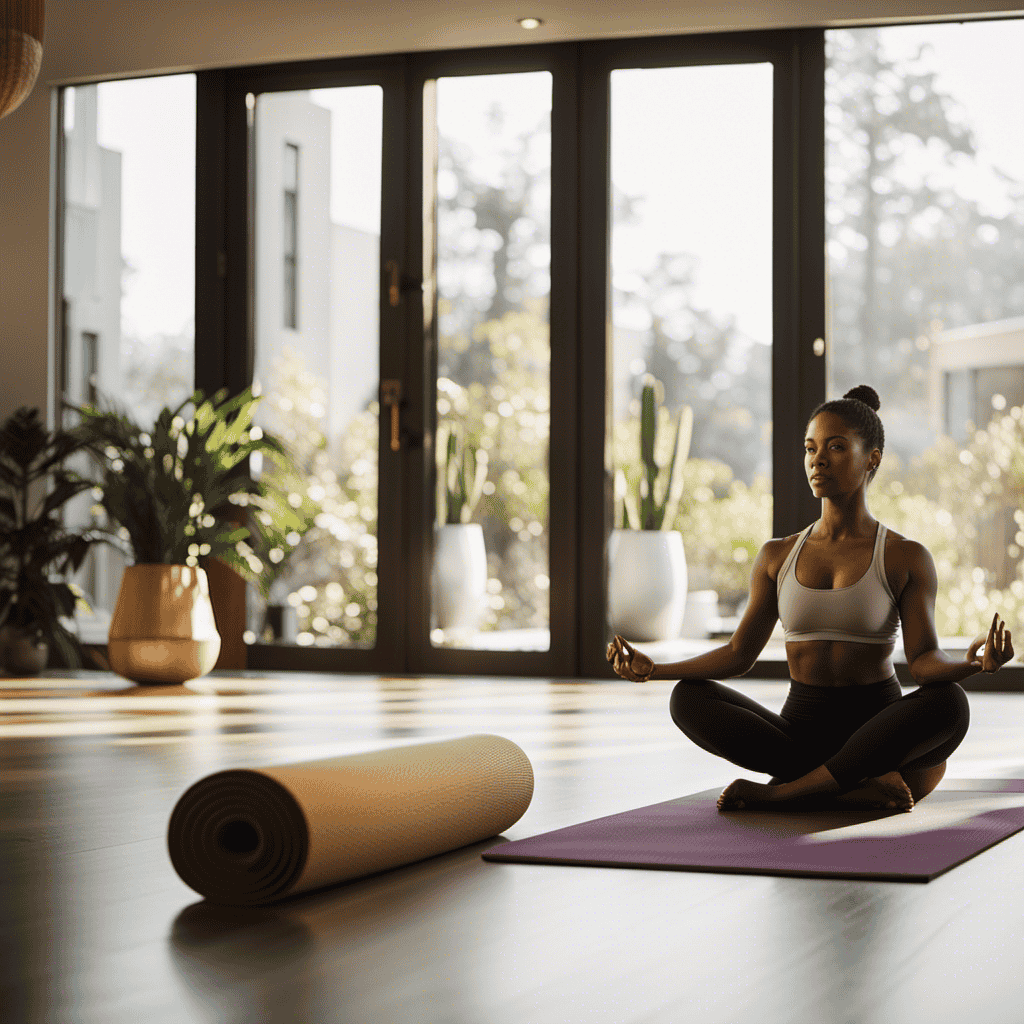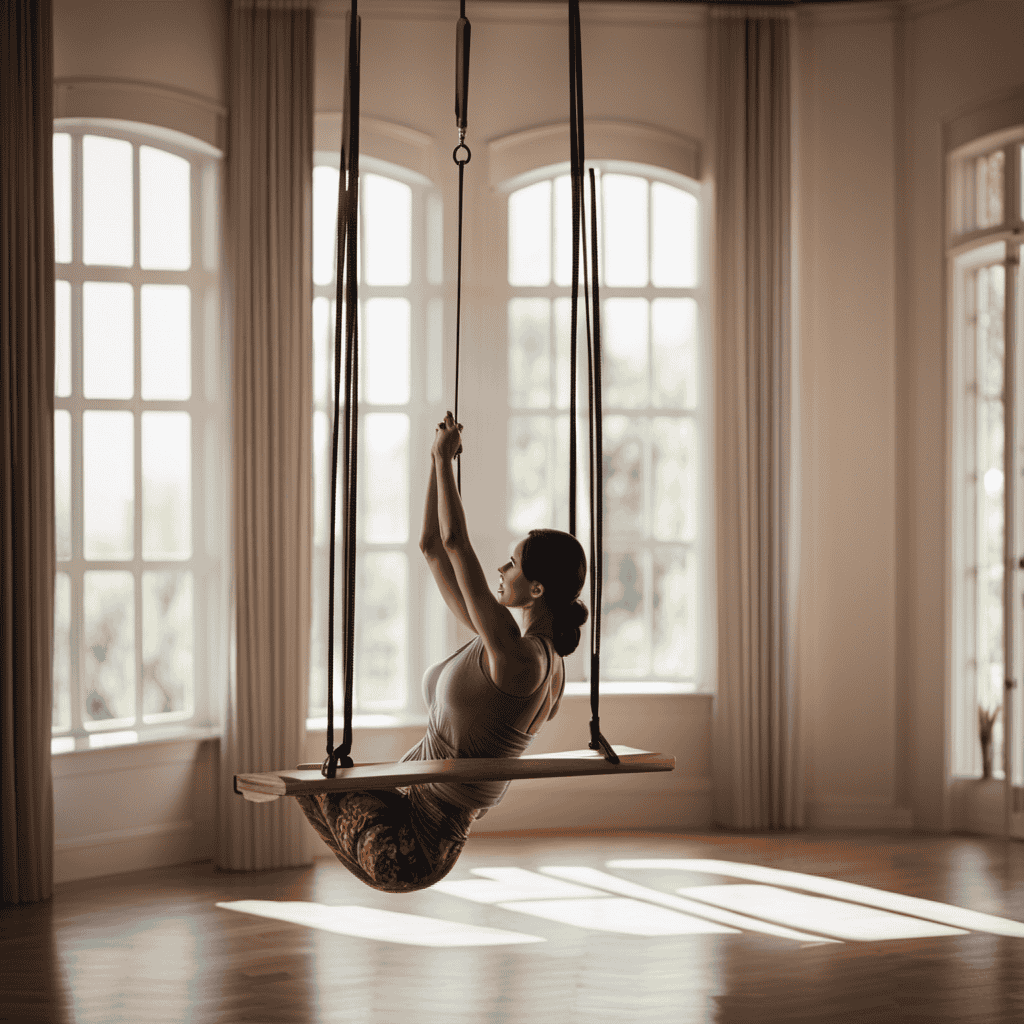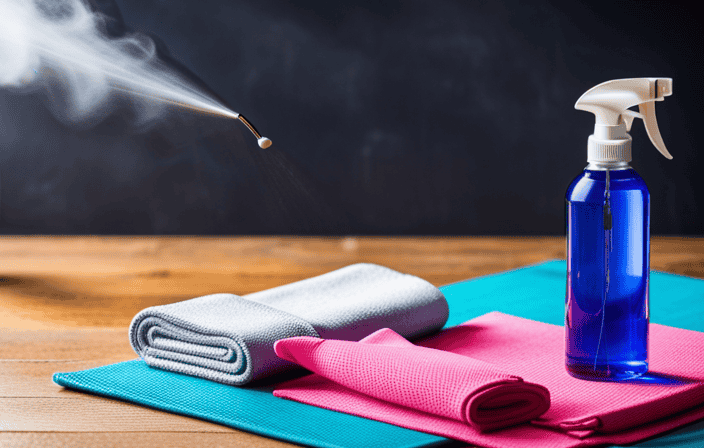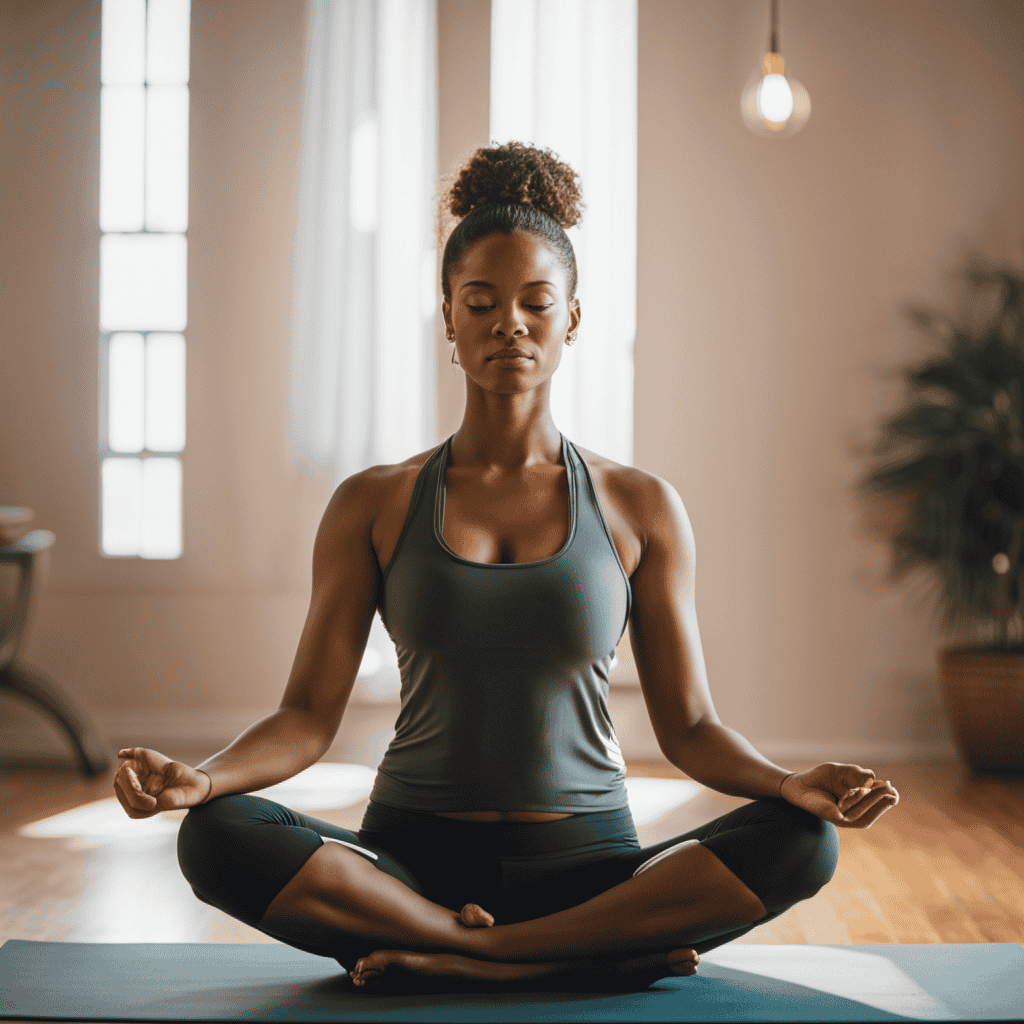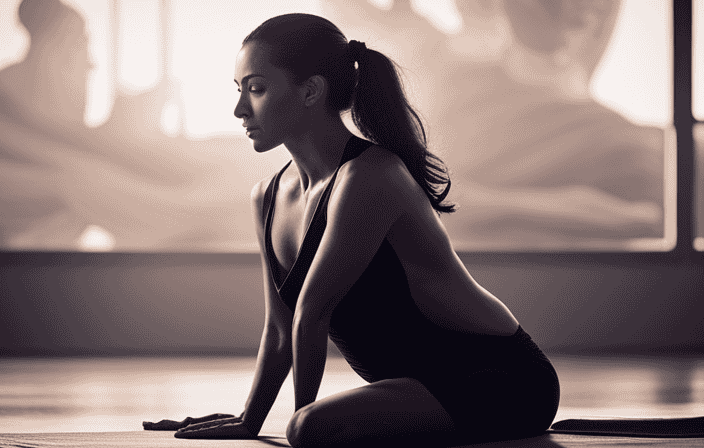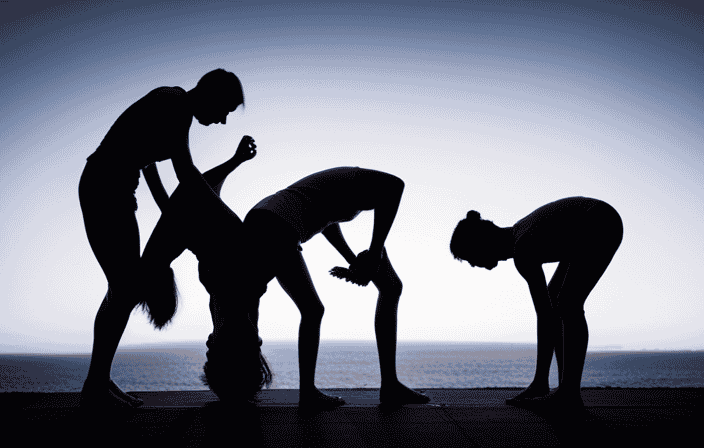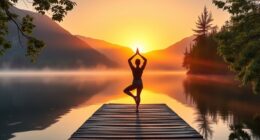Did you know that engaging in yoga practice can increase flexibility by as much as 35%?
If you’re a beginner looking to explore the world of yoga, you’re in the right place. In this article, we will delve into the various types of yoga and their unique benefits, helping you find the perfect style to start your journey.
From Hatha to Vinyasa, Iyengar to Kundalini, we will discuss each style’s focus and suitability.
So grab your yoga mat, get ready to breathe, and let’s discover the transformative benefits of yoga together.
Key Takeaways
- Yoga is an ancient practice from India that combines physical, mental, and spiritual elements.
- There are different types of yoga, including Hatha, Vinyasa, Iyengar, and Kundalini, each with its own focus and benefits.
- Hatha and Vinyasa yoga are best for beginners, as they focus on alignment and breathing techniques.
- Regular practice of yoga can improve flexibility, strength, reduce stress and anxiety, and promote overall health.
What is Yoga?
Yoga is an ancient practice that combines physical postures, breathing exercises, and meditation techniques to promote physical health, mental well-being, relaxation, and inner peace. It is a holistic approach to wellness that has been practiced for thousands of years.
The history of yoga dates back to ancient India, where it originated as a spiritual practice. Over time, it has evolved and adapted to meet the needs of modern practitioners. Today, yoga is widely recognized for its ability to reduce stress and anxiety, improve flexibility and range of motion, and increase strength.
It offers a wide range of poses and techniques that can be tailored to individual needs. Whether you’re looking for stress relief or a way to improve your overall well-being, there are yoga poses and practices that can help you achieve your goals.
Different Yoga Styles
I personally prefer to explore the various styles of yoga available. It’s fascinating to delve into the rich history of yoga styles and understand how they have evolved over time. Here are some important points to consider:
-
Yoga styles for advanced practitioners: As you progress in your yoga journey, you may want to explore more challenging styles such as Ashtanga or Bikram yoga. These styles require a higher level of strength, flexibility, and endurance.
-
The history of yoga styles: Each yoga style has its own unique origins and philosophy. For example, Ashtanga yoga was developed by Sri K. Pattabhi Jois and focuses on a set sequence of postures. Bikram yoga, on the other hand, was created by Bikram Choudhury and consists of a series of 26 postures practiced in a heated room.
-
It’s important to choose a yoga style that resonates with you and aligns with your goals and preferences. Whether you prefer a more physically demanding practice or a gentle and restorative one, there is a yoga style out there for everyone.
-
Remember, the key to finding the perfect yoga style for you is to experiment and listen to your body. Don’t be afraid to try different styles and teachers until you find the one that feels right for you.
Benefits of Yoga
Regular practice of yoga has been shown to improve flexibility, increase strength, and reduce stress. It also promotes overall health and well-being. The benefits of yoga extend beyond just physical fitness. Yoga has a positive impact on mental health as well. By incorporating breathing techniques and meditation, yoga helps to calm the mind, reduce anxiety, and improve focus and concentration.
The practice of yoga provides a space for self-reflection and introspection. It allows individuals to develop a deeper sense of self-awareness and inner peace. Additionally, the physical postures and movements in yoga release endorphins, which are known as the body’s natural feel-good chemicals. These endorphins help to elevate mood and alleviate symptoms of depression.
By regularly engaging in yoga practice, individuals can experience improved mental well-being and a greater sense of overall harmony.
Yoga for Beginners
For beginners, it is important to find a yoga style that suits their needs and abilities. When starting out, it’s helpful to focus on yoga poses that are beginner-friendly and easy to follow. Here are some beginner yoga tips to get you started:
| Yoga Poses | Beginner Yoga Tips | Benefits |
|---|---|---|
| Mountain Pose | Stand tall with feet hip-width apart, shoulders relaxed. Engage core and breathe deeply. | Improves posture and balance. |
| Child’s Pose | Kneel on the ground, sit back on your heels, and stretch your arms forward. Relax your forehead on the mat. | Relieves stress and calms the mind. |
| Downward Facing Dog | Begin on your hands and knees, tuck toes under and lift hips up, forming an inverted V shape. Press palms into the ground and relax neck and shoulders. | Stretches the whole body and energizes. |
| Cat-Cow Pose | Start on your hands and knees, arch your back up like a cat and then lower your belly towards the mat while lifting your chin and chest. Alternate between the two positions. | Increases spinal flexibility and releases tension. |
Remember to listen to your body and modify the poses as needed. Take it slow, breathe deeply, and enjoy the journey of discovering the amazing benefits of yoga.
Yoga Attire
When choosing yoga attire, it is important to wear comfortable and breathable clothing that allows freedom of movement. Here are some tips to help you choose the right yoga attire:
-
Opt for comfortable and breathable fabrics like cotton or moisture-wicking materials to keep you cool and dry during your practice.
-
Choose clothing that fits well and allows for unrestricted movement. Avoid anything too tight or restrictive.
-
Consider the type of yoga you’ll be practicing. For more active styles like Vinyasa, you may prefer fitted clothing that stays in place during dynamic movements. For more relaxed styles like Hatha, looser fitting clothing may be more comfortable.
-
Don’t forget about your feet! Bare feet are recommended for better stability and connection with the ground, but if you prefer, you can wear thin-soled shoes that allow for flexibility.
By wearing the right yoga attire, you’ll be able to fully focus on your practice and move with ease and comfort.
Finding a Yoga Instructor
I recommend asking for recommendations and reading online reviews to find a knowledgeable yoga instructor. When searching for a yoga teacher, it is important to find someone who is experienced and well-trained in their practice.
Look for instructors who have completed reputable yoga teacher training programs and have a strong understanding of anatomy and alignment. A good yoga instructor should also be able to create a safe and inclusive environment for all students, regardless of their level of experience or physical abilities.
Additionally, consider the teaching style of the instructor and whether it aligns with your preferences and goals. Some teachers may focus more on physical postures, while others may emphasize the spiritual or meditative aspects of yoga.
Ultimately, choosing the right yoga instructor is about finding someone who inspires and supports you on your yoga journey.
Final Thoughts on Yoga
In my opinion, consistency and guidance from a knowledgeable instructor are crucial for making progress in yoga. Regular practice is key in order to experience the many benefits that yoga has to offer.
Here are some tips for starting a yoga routine:
-
Set a schedule: Find a time that works best for you and commit to practicing yoga on a regular basis. Consistency is important in order to build strength, flexibility, and balance.
-
Start with beginner-friendly classes: Look for classes that are specifically designed for beginners. These classes will provide a solid foundation and help you understand the basic principles of yoga.
-
Listen to your body: Pay attention to how your body feels during and after each practice. If something doesn’t feel right, modify the pose or take a break. It’s important to honor your body’s limitations and avoid pushing yourself too hard.
Incorporating these tips into your yoga routine will help you establish a regular practice and reap the benefits of this ancient practice. Remember, progress in yoga comes with time, so be patient and enjoy the journey.
Frequently Asked Questions
How long does it take to see results from practicing yoga?
It varies from person to person, but with consistent practice, you can start experiencing the benefits of yoga, such as stress relief and improved posture, within a few weeks to a few months. Keep practicing and be patient with yourself.
Can yoga help with weight loss?
Yes, yoga can help with weight loss. It is a great form of exercise that can burn calories and increase metabolism. Additionally, yoga for stress relief and improving flexibility can contribute to overall weight management.
Is it necessary to be flexible to start practicing yoga?
Flexibility requirements for practicing yoga vary depending on the style. However, modifications can be made for beginners with limited flexibility. Focus on proper alignment and gradually increase flexibility over time through regular practice.
Can yoga be practiced during pregnancy?
Yoga modifications for pregnant women are essential to ensure a safe and comfortable practice. Avoid poses that involve lying on the belly, deep twists, and intense backbends. Consult with a prenatal yoga instructor for guidance.
How often should I practice yoga to see benefits?
To see benefits from yoga, it’s recommended to practice regularly. Aim for at least 3-4 sessions per week, with each session lasting around 30-60 minutes. Consistency is key, so find a routine that works for you and stick to it.
Conclusion
In conclusion, yoga is an incredible practice that offers a wide range of benefits for both the body and mind.
From Hatha to Vinyasa, Iyengar to Kundalini, there is a yoga style for everyone, regardless of fitness level or limitations.
The physical postures, breath control, and relaxation techniques in yoga help improve strength, flexibility, and balance. It also reduces stress, boosts the immune system, and improves breathing and circulation.
So why wait? Roll out your mat, find your perfect style, and experience the transformative power of yoga. It’s like a magical elixir for your body and soul!
